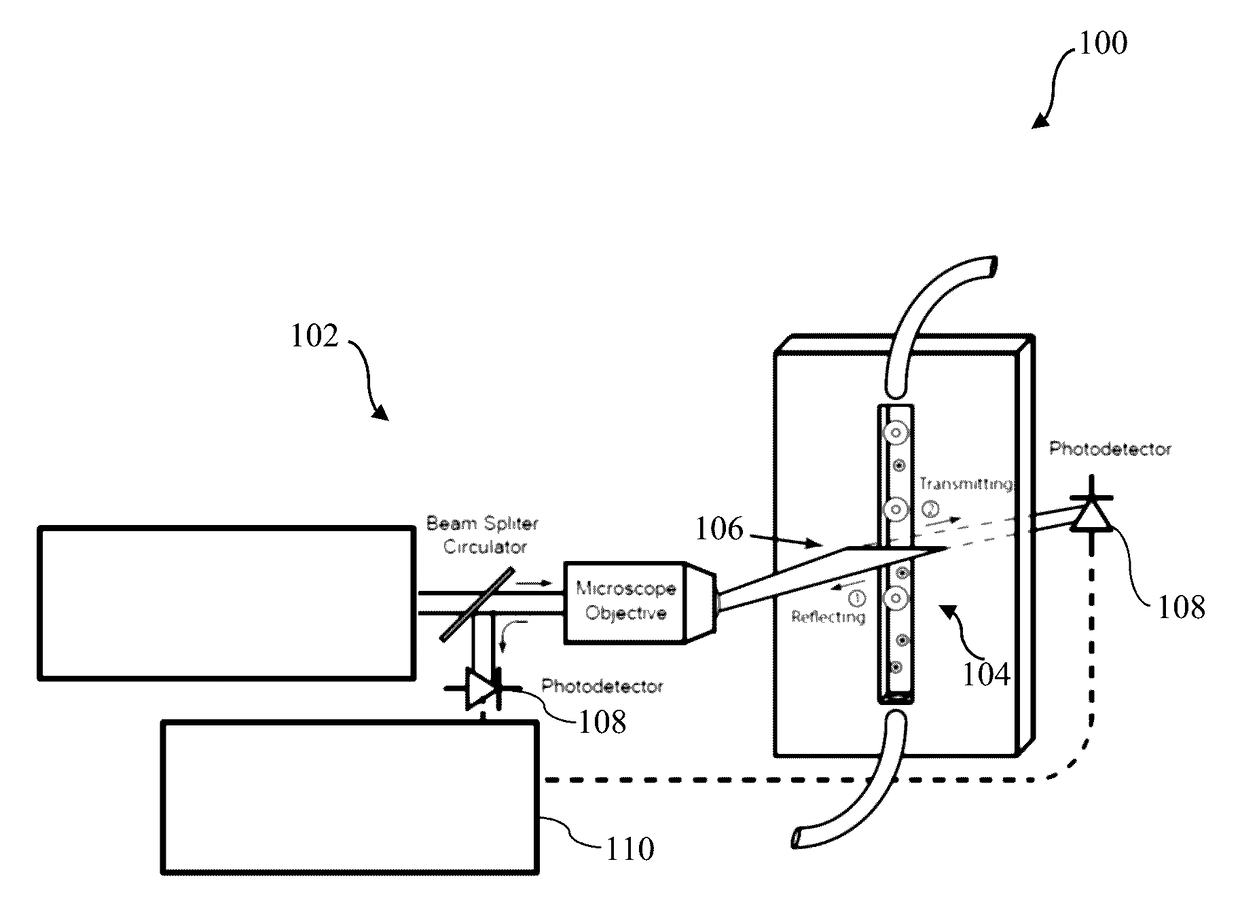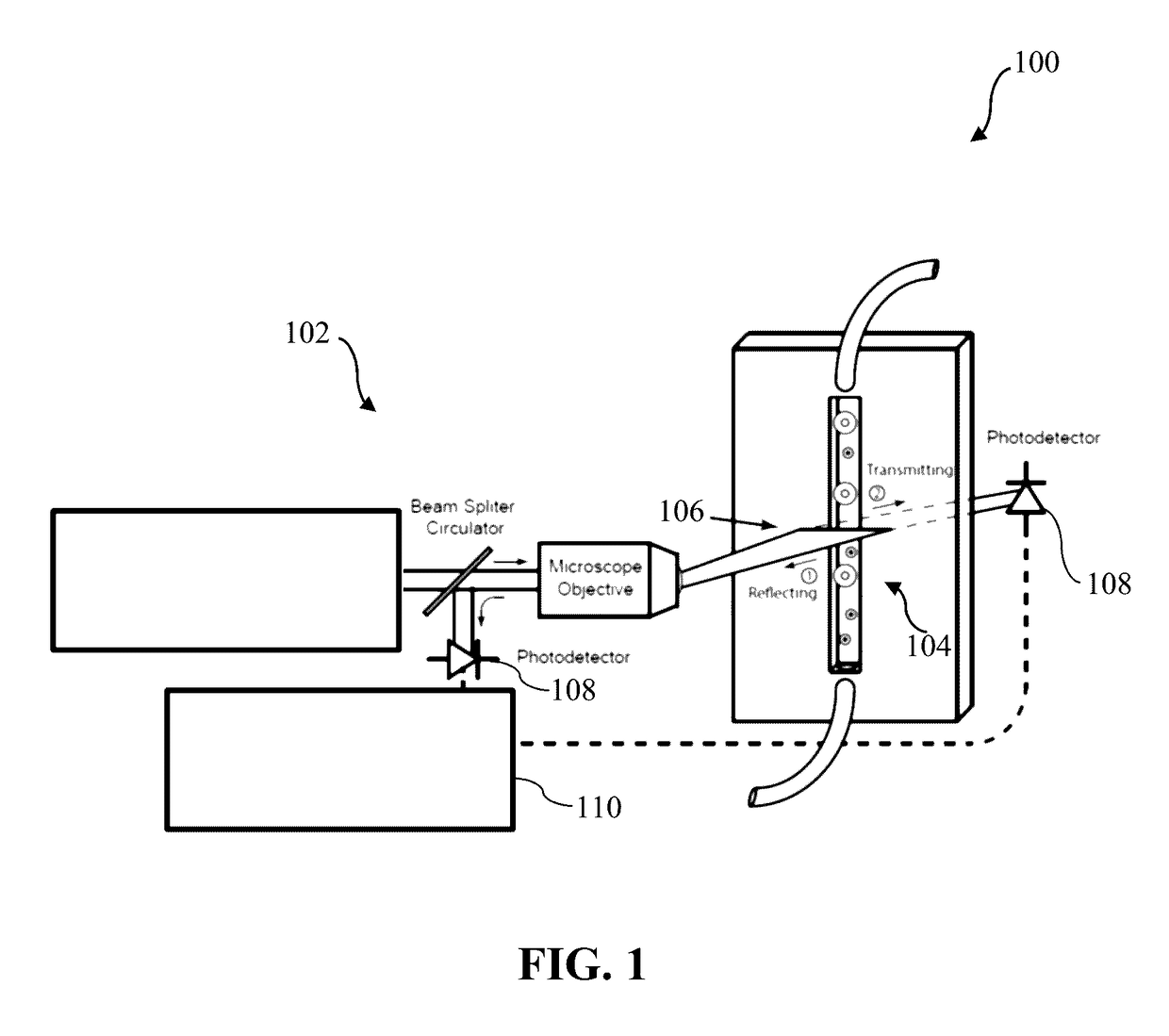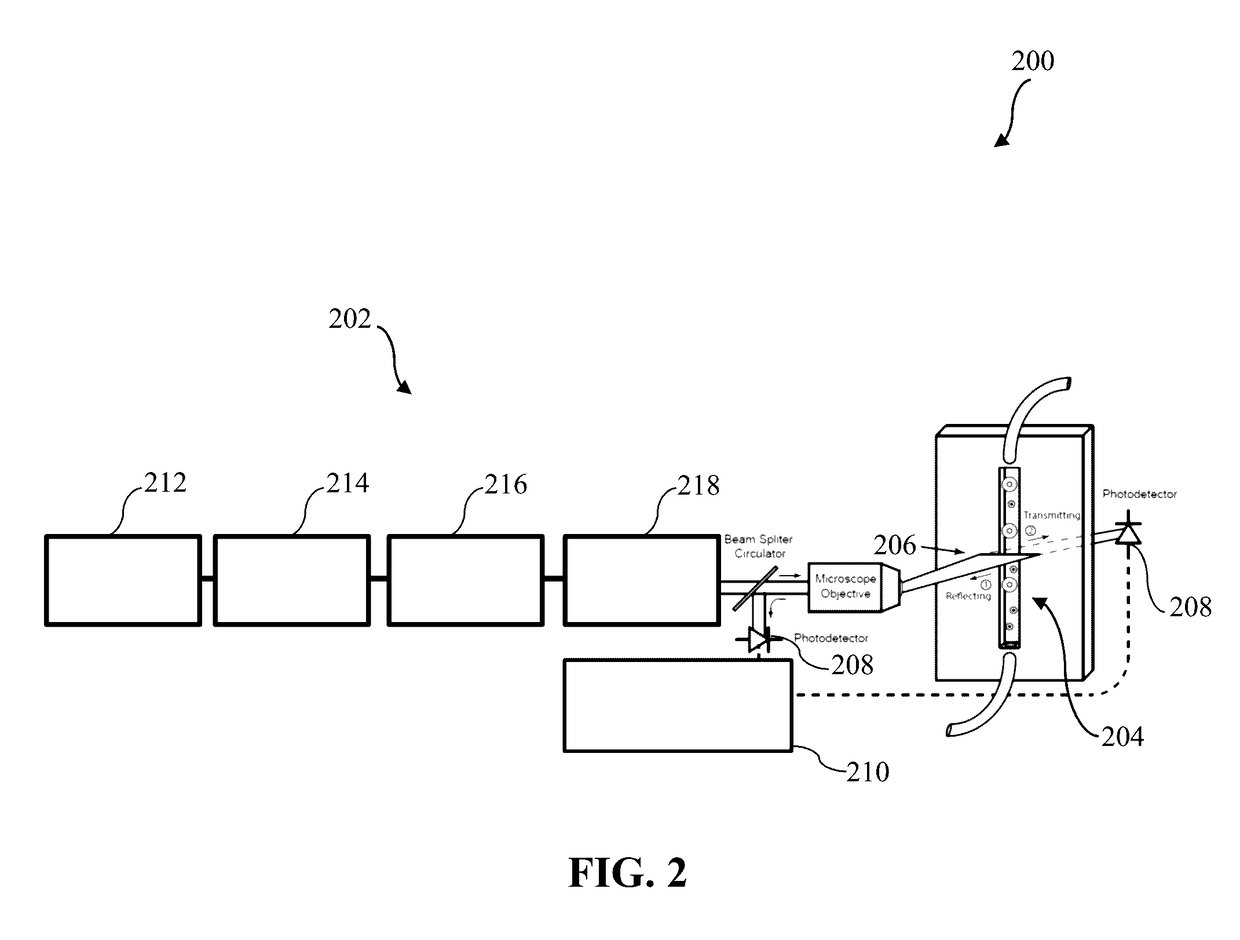Compressive imaging systems and methods
a compression imaging and imaging system technology, applied in the field of compression imaging systems, can solve the problems of limiting the potential operating rate of cutting-edge ultrahigh-speed imaging systems, limiting the speed, resolution, image quality of approaches,
- Summary
- Abstract
- Description
- Claims
- Application Information
AI Technical Summary
Problems solved by technology
Method used
Image
Examples
example 1
Compressive Ultrahigh-Speed Continuous Imaging Using Spectrally-Structured Ultrafast Laser Pulses
[0048]Ultrahigh-speed continuous imaging is a key enabling technology for investigations throughout the life and physical sciences. [1-5] Though burst imaging systems such as CMOS [6] and CCD [7] imaging arrays with in situ storage are useful for observing isolated events, many applications (e.g. high-throughput diagnostics) necessitate continuous imagers, which require considerable hardware resources to record streams of high-speed image data. Architectures based on photonic time-stretch have made significant achievements in ultrahigh-speed continuous imaging. [8-13] However, such approaches remain fundamentally limited in speed, resolution, and image quality by the measurement rate of electronic digitizers. [14] Both conventional CCD arrays and photonic time-stretch enabled systems such as STEAM read out the pixel information serially with a single analog to digital converter (ADC), fi...
references — example 1
References—Example 1
[0095][1] Petty, H. R., “Spatiotemporal chemical dynamics in living cells: from information trafficking to cell physiology,” Biosystems 83(23), 217-224 (2006).
[0096][2] Lang, P., Yeow, K., Nichols, A., and Scheer, A., “Cellular imaging in drug discovery,” Nat. Rev. Drug Discov. 5(4), 343-356 (2006).
[0097][3] Brouzes, E., Medkova, M., Savenelli, N., Marran, D., Twardowski, M., Hutchison, J. B., Rothberg, J. M., Link, D. R., Perrimon, N., and Samuels, M. L., “Droplet microfluidic technology for single-cell high-throughput screening,” Proc. Natl. Acad. Sci. U.S.A. 106(34), 14195-14200 (2009).
[0098][4] Rimon, N. and Schuldiner, M., “Getting the whole picture: combining throughput with content in microscopy,” J. Cell Sci. 124(22), 3743-3751 (2011).
[0099][5] Weaver, W. M., Tseng, P., Kunze, A., Masaeli, M., Chung, A. J., Dudani, J. S., Kittur, H., Kulkarni, R. P., and Carlo, D. D., “Advances in high-throughput single-cell microtechnologies,” Curr. Opin. Biotechnol. 25(...
example 2
High-Speed Flow Microscopy Using Compressed Sensing with Ultrafast Laser Pulses
[0128]Ultrahigh-speed continuous imaging is a critical technology for high-throughput screening of cell structure and behavior [1], drug discovery [2, 3], rare cell detection for cancer diagnostics [4], and numerous other clinical and basic research applications throughout the life and physical sciences [5, 6]. For example, understanding cellular heterogeneity has become essential for investigating drug resistance in cancer treatment wherein cells of interest often comprise less than 0.2% of the total population [6]. Identification and isolation of subpopulations presents a significant challenge for statistically and biologically meaningful analysis and thus demands techniques capable of both high throughput and high information content. To meet this requirement, imaging flow cytometry combines the high acquisition rate of non-imaging traditional flow cytometry with the high information content of optical...
PUM
 Login to View More
Login to View More Abstract
Description
Claims
Application Information
 Login to View More
Login to View More - R&D
- Intellectual Property
- Life Sciences
- Materials
- Tech Scout
- Unparalleled Data Quality
- Higher Quality Content
- 60% Fewer Hallucinations
Browse by: Latest US Patents, China's latest patents, Technical Efficacy Thesaurus, Application Domain, Technology Topic, Popular Technical Reports.
© 2025 PatSnap. All rights reserved.Legal|Privacy policy|Modern Slavery Act Transparency Statement|Sitemap|About US| Contact US: help@patsnap.com



